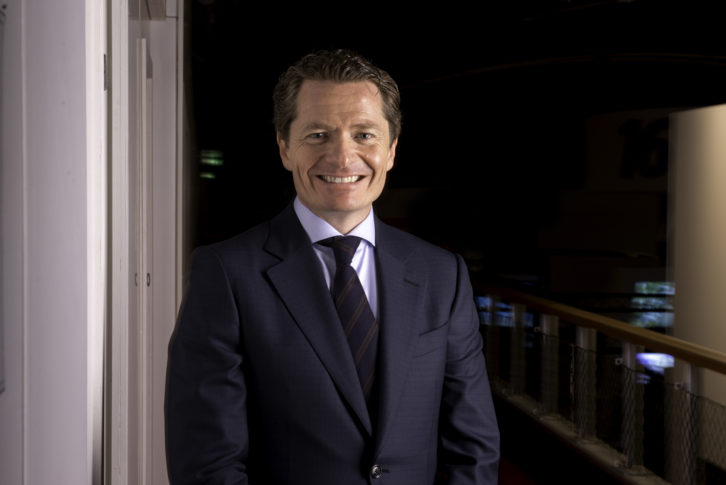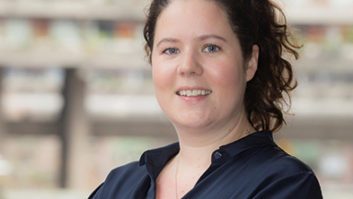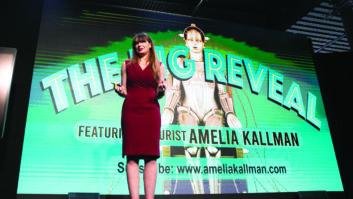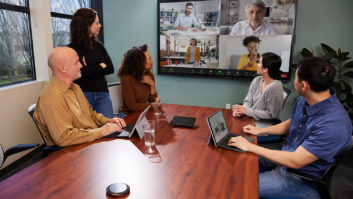
For collaboration technology to drive global productivity and economic growth, it must deliver a genuinely immersive meeting experience, says TIG’s Robin van Meeuwen.
The pace of change in the workplace over the past two decades has been remarkable. In the not too distant past, the most eye-catching and impressive piece of office technology was the fax machine. This wonderful piece of equipment somehow managed to send whole paper documents from the other side of the world across the telephone network. Now, nobody uses fax machines and they are as obsolete as a rotary dial telephone.
Instead, the corporate workplace technology is now collaborative, enabling instant communication and decision-making, and is populated by team members who can share information instantly across the globe from their desktops or via their mobile devices. As such, instant connectivity, mobile interaction and seamless, collaborative technology are becoming a standard requirement in the working environment. The challenge for AV managers is to ensure that AV/IT systems not only enable this collaborative approach to working, but also that the systems are sufficiently future-proofed so that as technology develops and ways of working continue to evolve, the AV and IT systems are not restricting this development, but are instead enhancing it.
The AV manager must ensure that connectivity – whether between individuals, campus buildings or global offices – is given top priority. Furthermore, as flexible working becomes more commonplace and staff are ever more distributed, communication also needs to be seamless for these individuals, so they feel as much a part of the team as office-based staff. This type of instant connectivity means that today’s workforces are breaking through the confines of traditional office environments and technology will need to be connecting to systems, colleagues and information from anywhere in the workplace to anywhere in the world.
Collaboration technology and the new ‘distributed’ workforce
We’ve all had experience of what might be called a ‘traditional’ meeting. This type of meeting consists of all attendees gathering in one room, in front of (perhaps) a large screen to see a presentation delivered by one individual. The shortcomings of this meeting format are becoming apparent, especially as staff are now armed with laptops, tablets and smartphones, and often use them to take meeting notes, or make reference to work in progress, in real-time. Consequently, with the right technology, people can instantly share content from their mobile devices onto a display that everyone can see. Video-teleconferencing and document sharing technologies are already offering room-to-room and peer-to-peer connections across geographically separate locations, but the most sophisticated and productive solutions will provide participants with simultaneous access and control to a ‘united workspace’, regardless of their location – thereby creating a much more engaging, enlightening and immersive experience.
These advanced collaboration technologies will undoubtedly begin to form the centrepiece of the ‘office of the future’. It is the responsibility of AV managers, consultants and integrators, as the experts, to embrace the latest technological developments and educate their clients about the possibilities that this technology can bring. By offering a more advanced collaboration solution that can really generate significant business benefits, these stakeholders can position their advice, their business and their reputation in exactly the right place to deal with their customers’ needs.
Secondly, AV managers need to implement workplace collaboration systems that are device agnostic, enabling data streams from a wide range of connected devices regardless of operating system, location, or type. Whiteboard, internet, laptops, databank – all these need to come together simultaneously and side-by-side to remove barriers to productivity and engagement. For meetings to really engage the new generation employee, workplace infrastructure must empower meeting participants to share their work and ideas instantly to accelerate decision-making by bringing all factors into a common view.
Finally, but arguably most importantly, the experience needs to be exhilarating. Workplace collaboration technology needs to be immersive, fast, visually beautiful, innovative, adaptive and future-proof. With the huge advances in visual collaboration and the emergence of Infopresence (the flexible flow of content and data from multiple sources across multiple screens and connected locations on demand), meetings with colleagues can be an exciting, dynamic experience. Through the deployment of visual collaboration technology such as Oblong’s Mezzanine, integrators can create genuinely engaging workplace environments that appeal to today’s increasingly switched-on workforce. The reign of the ‘bored room’ will soon be at an end.
Infopresence maximises employee engagement
Infopresence is the experience of being immersed with your work group’s vital content and data, for those present in the room and those in distributed locations. It can transform the workplace from a rigid and structured environment to an immersive, three-dimensional workplace that complements the intelligence, aspirations and collaborative tendencies of today’s workforce.
Oblong’s Mezzanine is delivering Infopresence in a variety of organisations across the globe. The Mezzanine system helps maximise Generation Z’s interest and retention, keeping them connected and engaged. Infopresence provides a richer, deeper connection to information; immersing groups in a radically new relationship with their data facilitates the visualisation and absorption of data, engaging teams more easily, quickly, and effectively.
Benefits of Infopresence include:
- Bridges geographical space and concentrates dispersed stakeholders in a single locale to promote maximum collective engagement with essential collaborators.
- Parallel, real-time working processes enable group members to discover immediate feedback and revision potential, promoting faster insight recognition.
- Generation Z excel at getting the most out of technology; Infopresence maximises the human cognitive capacities that promote group engagement, creativity, and problem-solving.
- Infopresence is democratic by nature – giving everyone participating in the work session a voice at the table. Having a voice or say in business outcomes is key to retention of Millennial staff and thus a strategic imperative for today’s businesses.
Integrators that can provide experiences such as Infopresence in the workplace can give their clients a significant competitive advantage by stimulating feelings of engagement and purpose that will attract and retain the talent rapidly defining the 21st century workplace.
Robin van Meeuwen is CEO of Technological Innovations Group (TIG)







